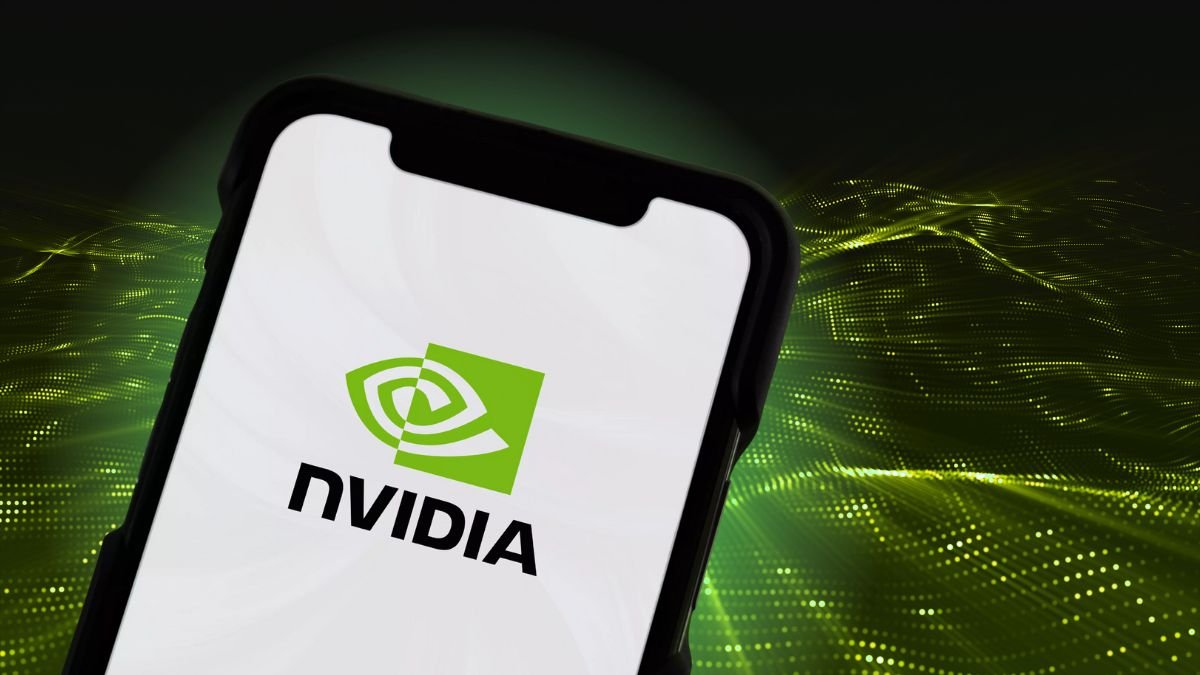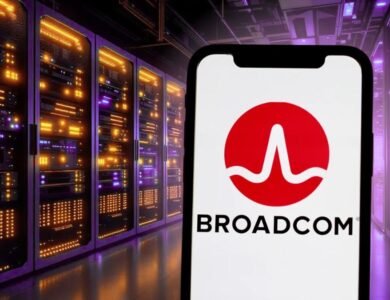
This second-quarter earnings report arrives as a pivotal check on a company that transformed from gaming into an artificial intelligence infrastructure leader in about two years.
Consensus models peg revenue near $45.9–$46.0 billion and about $1.01 per share in EPS, figures analysts and investors will scan closely. Data center sales drove 88% of revenue last quarter, concentrating risk around hyperscaler demand from Microsoft, Google, Amazon, and Meta.
Wall Street will focus on how management frames supply, product ramps for Blackwell and networking, and near-term pricing. That guidance will shape expectations for growth and margins and influence how shares and broader benchmarks reprice AI exposure.
With the company making roughly 7.5%–7.6% of the S&P 500, any surprise could ripple across the stock market. After growth cooled from triple-digit rates to 69% in the prior quarter, this report will test durability of demand and inform estimates for the rest of the year.
Why this second-quarter earnings report is a pivotal AI litmus test
After a swift shift from gaming into enterprise infrastructure, this update could confirm whether growth is sustainable. Over the past two years, revenue more than tripled and profits rose even faster as demand for generative models reshaped priorities.
From gaming chips to AI core:
From gaming hardware into the core of enterprise intelligence
Data center sales now drive the company, accounting for roughly 88% of fiscal Q1 revenue. That concentration means this quarter’s results and forward guidance will signal whether hyperscaler investment plans — about $320 billion this year — translate into durable order books.
Jensen Huang’s commentary on timing, capacity, and partner ramps will sway sentiment. Investors want clear signals on supply constraints, product cadence, and deployment timelines.
Last week’s mixed messages — caution from some leaders alongside persistent compute shortages — keep near-term demand elevated yet uncertain. Market reaction will hinge not just on the print, but on how convincingly management shows execution at scale.
Nvidia’s Q2 Earnings Put AI Market Hopes to the Test: expectations, guidance, and what Wall Street will price in
This quarterly update arrives with consensus figures that already price in robust demand. The core estimates set a clear baseline for surprises and will shape how investors react across the tape.
Consensus snapshot
Consensus sees fiscal second quarter revenue near $45.9–$46.0 billion, roughly +53% year over year, and EPS of about $1.01 per share. Those estimates act as the immediate bar for any upside or downside surprise in the earnings report.
What a credible “beat and raise” would look like
A believable beat-and-raise would include fiscal third-quarter guidance in the ~$52.7–$55 billion range. Some analysts model guidance moving higher — into the mid-$50 billions — if regions like China re-accelerate or supply improves.
Analyst positioning and targets
Wall Street remains heavily bullish: among 67 analysts, 49 rate a Strong Buy. The average target price sits near $194.22, with a wide $100–$270 spread. That dispersion shows upside potential but also a high bar given recent gains.
Key demand drivers flagged by multiple analyst teams include Blackwell GPUs and NVL72 rack deployments. Execution and supply cadence will determine whether momentum supports a sustained guidance lift.
“Results typically post around 4:20–4:30 pm EST, with the conference call at 5 pm EST.”
Watch orders, deliveries, and guidance closely this week; those signals will tell if near-term demand exceeds current estimates.
Revenue engines and product ramps: data center dominance, Blackwell, and robotics
Hyperscaler orders and system deployments are the clearest signals of how revenue will track this year. Data center workloads accounted for 88% of sales last quarter, so cloud provider demand shapes near-term shipment cadence and spending patterns.
Data center at the core
Large cloud customers drive most of the company’s spending plans. Megacap commitments—roughly $320 billion in data center investment—translate into concentrated demand that makes order timing a key signal for future revenue.
Blackwell ramp dynamics
The Blackwell family has reached about $27 billion in sales, roughly 70% of data center revenue. Management says supply, not end-market appetite, is the main limiter.
Analysts watch GB200 and GB300 layering and NVL72 rack rollouts as high-frequency indicators of shipment velocity and performance in customer builds.
Beyond chips: robotics and systems
Systems and software tie GPUs into full solutions. Roadmap clarity matters: Blackwell Ultra is slated for the second half of 2025, which eases concerns around platform transitions.
The Jetson AGX Thor developer kit sells for $3,499, includes 128GB of memory, and delivers more than 7.5x prior compute. Automotive and Robotics revenue hit $567 million, up 72% year over year, signaling early but meaningful growth beyond core data center sales.
“Supply cadence, not demand, is the bottleneck for further scale.”
China, H20, and regulatory risk: how export licenses could swing sales
Licensing uncertainty in China forced conservative guidance and left billions of dollars in play for results. Management excluded H20 from guidance after export controls paused shipments, even though H20 could have added roughly $8 billion in the second quarter if fully shipped.
H20 scenarios and guidance upside
KeyBanc models show that folding H20 into forward guidance could add about $2–$3 billion. Wall Street will watch whether the company keeps that upside off its books given permit timing and local demand signals.
Licenses, revenue sharing, and geopolitics
A reported deal to route 15% of China chip revenue back under U.S. oversight aims to reopen export paths. That arrangement affects price and margins and forces a choice: accept slimmer net revenue or continue cautious guidance.
Next-gen pathways and B30A contours
At the same time, a Blackwell-based China chip, labeled B30A in reports, could outperform H20 while fitting regulatory limits. Approval is uncertain, and local policy nudges toward domestic chips add extra risk for near-term sales predictability.
Jensen Huang’s outreach to officials seeks a steady licensing framework, but timing variability means China remains a swing factor for upcoming quarters.
Market impact and investor lens: NVDA’s sway over the S&P 500 and AI trade
Few single-company reports carry enough heft to move major indexes, yet this one can sway benchmark returns for the week.
As Nvidia goes, so goes the market: sizing index exposure and post-earnings moves
Index weight matters. At roughly 7.6% of the s&p 500 and 14.4% of the Nasdaq-100, a large stock’s single-session move can tilt sector performance and factor rotations.
Over the past two years, post-report swings averaged about 6.1% in a session. Notable moves include +16.4% (Feb 2024), -6.4% (Aug 2024), -8.5% (Feb 2025), and +3.3% (May 2025).
That volatility means even modest changes in per share guidance or results may translate into outsized index reactions. Investors often treat this stock as a proxy for demand across hardware and software suppliers, amplifying spillover effects.
Analysts and portfolio managers watch commentary closely. Guidance tweaks can shift value-versus-growth leadership and alter multiples across related companies.
“Given its scale, below-average moves can still sway benchmark performance and sector breadth.”
For investors, the takeaway is simple: read the report and call carefully. Small adjustments in demand assumptions this quarter can affect valuations across an entire supply chain and set positioning for the next quarter.
Conclusion
The coming earnings report may settle whether demand and supply align enough to sustain rapid growth. Consensus places revenue near $46 billion with about $1.01 in EPS, a clear baseline for analysts and investors.
Data center sales remain the engine of performance, so ramps for Blackwell and system supply will shape short-term sales and price discovery. China licensing and potential revenue-sharing models are the chief risk vectors that could skew guidance.
Analysts will re-benchmark estimates based on pipeline clarity, capacity, and pricing. Investors should weigh the quarter’s print and guidance language against longer-term bets in robotics, software, and full-stack intelligence.
In short, this quarter will influence near-term valuation and broader investment positioning across companies tied to artificial intelligence infrastructure.



